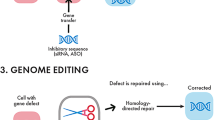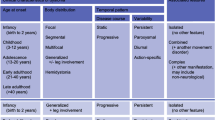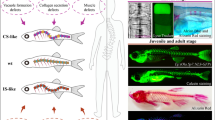Abstract
A large number of molecular pathways have been implicated in the degeneration of axotomized motoneurons. We previously have demonstrated substantial differences in the survival rate of axotomized motoneurons across different rat strains. Identification of genetic differences underlying such naturally occurring strain differences is a powerful approach, also known as forward genetics, to gain knowledge of mechanisms relevant for complex diseases, like injury-induced neurodegeneration. Overlapping congenic rat strains were used to fine map a gene region on rat chromosome eight previously shown to regulate motoneuron survival after ventral root avulsion. The smallest genetic fragment, R5, contains 35 genes and displays a highly significant regulatory effect on motoneuron survival. Furthermore, expression profiling in a F2(DAxPVG) intercross demonstrates one single cis-regulated gene within the R5 fragment; Gsta4, encoding glutathione S-transferase alpha-4. Confirmation with real-time PCR shows higher Gsta4 expression in PVG compared with DA both in naïve animals and at several time points after injury. Immunolabeling with a custom made rat Gsta4 antibody demonstrates a neuronal staining pattern, with a strong cytoplasmic labeling of motoneurons. These results demonstrate and map naturally occurring genetic differences in the expression of Gsta4 is associated both with a highly significant increase in the survival of axotomized motoneurons and with a trans-regulation of several molecular pathways involved in neurodegenerative processes. This adds to a large body of evidence implicating lipid peroxidation as an important pathway for neurodegeneration.




Similar content being viewed by others
Abbreviations
- 4-HNE:
-
4-Hydroxynonenal
- AD:
-
Alzheimer’s disease
- AIL:
-
Advanced intercross line
- ALS:
-
Amyotrophic lateral sclerosis
- BSA:
-
Bovine serum albumin
- CNS:
-
Central nervous system
- DA:
-
Dark Agouti
- eQTL:
-
Expression QTL
- Gsta4:
-
Glutathione S-transferase alpha4
- MS:
-
Multiple sclerosis
- NeuN:
-
Neuronal nuclei
- PBS:
-
Phosphate-buffered saline
- PD:
-
Parkinson’s disease
- PVG:
-
Piebald Virol Glaxo
- ROS:
-
Reactive oxygen species
- SOD1:
-
Superoxide dismutase 1
- QTL:
-
Quantitative trait locus
- VRA:
-
Ventral root avulsion
References
Aitman, T. J., Critser, J. K., Cuppen, E., Dominiczak, A., Fernandez-Suarez, X. M., Flint, J., et al. (2008). Progress and prospects in rat genetics: A community view. Nature Genetics, 40(5), 516–522. doi:10.1038/ng.147.
Aitman, T. J., Glazier, A. M., Wallace, C. A., Cooper, L. D., Norsworthy, P. J., Wahid, F. N., et al. (1999). Identification of Cd36 (fat) as an insulin-resistance gene causing defective fatty acid and glucose metabolism in hypertensive rats. Nature Genetics, 21(1), 76–83. doi:10.1038/5013.
Aktas, O., Waiczies, S., & Zipp, F. (2007). Neurodegeneration in autoimmune demyelination: Recent mechanistic insights reveal novel therapeutic targets. Journal of Neuroimmunology, 184(1–2), 17–26. doi:10.1016/j.jneuroim.2006.11.026.
Awasthi, Y. C., Sharma, R., Cheng, J. Z., Yang, Y., Sharma, A., Singhal, S. S., et al. (2003). Role of 4-hydroxynonenal in stress-mediated apoptosis signaling. Molecular Aspects of Medicine, 24(4–5), 219–230.
Balogh, L. M., & Atkins, W. M. (2011). Interactions of glutathione transferases with 4-hydroxynonenal. Drug Metabolism Reviews, 43(2), 165–178. doi:10.3109/03602532.2011.558092.
Beckett, G. J., & Hayes, J. D. (1993). Glutathione S-transferases: Biomedical applications. Advances in Clinical Chemistry, 30, 281–380.
Behmoaras, J., Bhangal, G., Smith, J., McDonald, K., Mutch, B., Lai, P. C., et al. (2008). Jund is a determinant of macrophage activation and is associated with glomerulonephritis susceptibility. Nature Genetics, 40(5), 553–559.
Block, M. L., Zecca, L., & Hong, J. S. (2007). Microglia-mediated neurotoxicity: Uncovering the molecular mechanisms. Nature Reviews. Neuroscience, 8(1), 57–69. doi:10.1038/nrn2038.
Broman, K. W., Wu, H., Sen, S., & Churchill, G. A. (2003). R/qtl: QTL mapping in experimental crosses. Bioinformatics, 19(7), 889–890.
Centonze, D., Muzio, L., Rossi, S., Furlan, R., Bernardi, G., & Martino, G. (2010). The link between inflammation, synaptic transmission and neurodegeneration in multiple sclerosis. Cell Death and Differentiation, 17(7), 1083–1091. doi:10.1038/cdd.2009.179.
Cheng, J. Z., Singhal, S. S., Saini, M., Singhal, J., Piper, J. T., Van Kuijk, F. J., et al. (1999). Effects of mGST A4 transfection on 4-hydroxynonenal-mediated apoptosis and differentiation of K562 human erythroleukemia cells. Archives of Biochemistry and Biophysics, 372(1), 29–36. doi:10.1006/abbi.1999.1479.
Coles, B. F., & Kadlubar, F. F. (2005). Human alpha class glutathione S-transferases: Genetic polymorphism, expression, and susceptibility to disease. Methods in Enzymology, 401, 9–42. doi:10.1016/S0076-6879(05)01002-5.
Conforti, L., Tarlton, A., Mack, T. G., Mi, W., Buckmaster, E. A., Wagner, D., et al. (2000). A Ufd2/D4Cole1e chimeric protein and overexpression of Rbp7 in the slow Wallerian degeneration (WldS) mouse. Proceedings of the National Academy of Sciences of the United States of America, 97(21), 11377–11382. doi:10.1073/pnas.97.21.11377.
Cutler, R. G., Kelly, J., Storie, K., Pedersen, W. A., Tammara, A., Hatanpaa, K., et al. (2004). Involvement of oxidative stress-induced abnormalities in ceramide and cholesterol metabolism in brain aging and Alzheimer’s disease. Proceedings of the National Academy of Sciences of the United States of America, 101(7), 2070–2075. doi:10.1073/pnas.0305799101.
Darvasi, A., & Soller, M. (1994). Selective DNA pooling for determination of linkage between a molecular marker and a quantitative trait locus. Genetics, 138(4), 1365–1373.
Darvasi, A., & Soller, M. (1995). Advanced intercross lines, an experimental population for fine genetic mapping. Genetics, 141(3), 1199–1207.
Deng, H. X., Hentati, A., Tainer, J. A., Iqbal, Z., Cayabyab, A., Hung, W. Y., et al. (1993). Amyotrophic lateral sclerosis and structural defects in Cu, Zn superoxide dismutase. Science, 261(5124), 1047–1051.
Desmots, F., Rissel, M., Loyer, P., Turlin, B., & Guillouzo, A. (2001). Immunohistological analysis of glutathione transferase A4 distribution in several human tissues using a specific polyclonal antibody. Journal of Histochemistry and Cytochemistry, 49(12), 1573–1580.
Dorph-Petersen, K. A., Nyengaard, J. R., & Gundersen, H. J. (2001). Tissue shrinkage and unbiased stereological estimation of particle number and size. Journal of Microscopy, 204(Pt 3), 232–246.
Engle, M. R., Singh, S. P., Czernik, P. J., Gaddy, D., Montague, D. C., Ceci, J. D., et al. (2004). Physiological role of mGSTA4-4, a glutathione S-transferase metabolizing 4-hydroxynonenal: Generation and analysis of mGsta4 null mouse. Toxicology and Applied Pharmacology, 194(3), 296–308. doi:10.1016/j.taap.2003.10.001.
Esterbauer, H., Schaur, R. J., & Zollner, H. (1991). Chemistry and biochemistry of 4-hydroxynonenal, malonaldehyde and related aldehydes. Free Radical Biology and Medicine, 11(1), 81–128.
Geiger, L. K., Kortuem, K. R., Alexejun, C., & Levin, L. A. (2002). Reduced redox state allows prolonged survival of axotomized neonatal retinal ganglion cells. Neuroscience, 109(3), 635–642.
Giralt, A., Rodrigo, T., Martín, E. D., Gonzalez, J. R., Milà, M., Ceña, V., et al. (2009). Brain-derived neurotrophic factor modulates the severity of cognitive alterations induced by mutant huntingtin: Involvement of phospholipaseC[gamma] activity and glutamate receptor expression. Neuroscience, 158(4), 1234–1250.
Gundersen, H. J., Jensen, E. B., Kieu, K., & Nielsen, J. (1999). The efficiency of systematic sampling in stereology–reconsidered. Journal of Microscopy, 193(Pt 3), 199–211.
Hubatsch, I., Ridderstrom, M., & Mannervik, B. (1998). Human glutathione transferase A4-4: An alpha class enzyme with high catalytic efficiency in the conjugation of 4-hydroxynonenal and other genotoxic products of lipid peroxidation. Biochemical Journal, 330(Pt 1), 175–179.
Hubner, N., Wallace, C. A., Zimdahl, H., Petretto, E., Schulz, H., Maciver, F., et al. (2005). Integrated transcriptional profiling and linkage analysis for identification of genes underlying disease. Nature Genetics, 37(3), 243–253.
Irizarry, R. A., Hobbs, B., Collin, F., Beazer-Barclay, Y. D., Antonellis, K. J., Scherf, U., et al. (2003). Exploration, normalization, and summaries of high density oligonucleotide array probe level data. Biostatistics, 4(2), 249–264. doi:10.1093/biostatistics/4.2.249.
Jagodic, M., Colacios, C., Nohra, R., Dejean, A. S., Beyeen, A. D., Khademi, M., et al. (2009). A role for VAV1 in experimental autoimmune encephalomyelitis and multiple sclerosis. Science Translational Medicine, 1(10), 10ra21. doi:10.1126/scitranslmed.3000278.
Johnson, J. A., el Barbary, A., Kornguth, S. E., Brugge, J. F., & Siegel, F. L. (1993). Glutathione S-transferase isoenzymes in rat brain neurons and glia. Journal of Neuroscience, 13(5), 2013–2023.
Kato, S. (2008). Amyotrophic lateral sclerosis models and human neuropathology: Similarities and differences. Acta Neuropathologica, 115(1), 97–114. doi:10.1007/s00401-007-0308-4.
Leoni, V. (2009). Oxysterols as markers of neurological disease—A review. Scandinavian Journal of Clinical and Laboratory Investigation, 69(1), 22–25. doi:10.1080/00365510802651858.
Lidman, O., Swanberg, M., Horvath, L., Broman, K. W., Olsson, T., & Piehl, F. (2003). Discrete gene loci regulate neurodegeneration, lymphocyte infiltration, and major histocompatibility complex class II expression in the CNS. Journal of Neuroscience, 23(30), 9817–9823.
Lieven, C. J., Hoegger, M. J., Schlieve, C. R., & Levin, L. A. (2006). Retinal ganglion cell axotomy induces an increase in intracellular superoxide anion. Investigative Ophthalmology & Visual Science, 47(4), 1477–1485. doi:10.1167/iovs.05-0921.
Li-Hawkins, J., Lund, E. G., Bronson, A. D., & Russell, D. W. (2000). Expression cloning of an oxysterol 7alpha-hydroxylase selective for 24-hydroxycholesterol. Journal of Biological Chemistry, 275(22), 16543–16549. doi:10.1074/jbc.M001810200.
Lovell, M. A., Ehmann, W. D., Mattson, M. P., & Markesbery, W. R. (1997). Elevated 4-hydroxynonenal in ventricular fluid in Alzheimer’s disease. Neurobiology of Aging, 18(5), 457–461.
Lundberg, C., Lidman, O., Holmdahl, R., Olsson, T., & Piehl, F. (2001). Neurodegeneration and glial activation patterns after mechanical nerve injury are differentially regulated by non-MHC genes in congenic inbred rat strains. Journal of Comparative Neurology, 431(1), 75–87.
Mannervik, B., Board, P. G., Hayes, J. D., Listowsky, I., & Pearson, W. R. (2005). Nomenclature for mammalian soluble glutathione transferases. Methods in Enzymology, 401, 1–8. doi:10.1016/S0076-6879(05)01001-3.
Martin, L. J., Kaiser, A., & Price, A. C. (1999). Motor neuron degeneration after sciatic nerve avulsion in adult rat evolves with oxidative stress and is apoptosis. Journal of Neurobiology, 40(2), 185–201. doi:10.1002/(SICI)1097-4695(199908)40:2<185:AID-NEU5>3.0.CO;2-#.
Mitchell, J., Paul, P., Chen, H. J., Morris, A., Payling, M., Falchi, M., et al. (2010). Familial amyotrophic lateral sclerosis is associated with a mutation in d-amino acid oxidase. Proceedings of the National Academy of Sciences of the United States of America, 107(16), 7556–7561. doi:10.1073/pnas.0914128107.
Olofsson, P., Holmberg, J., Tordsson, J., Lu, S., Akerstrom, B., & Holmdahl, R. (2003). Positional identification of Ncf1 as a gene that regulates arthritis severity in rats. Nature Genetics, 33(1), 25–32. doi:10.1038/ng1058.
Pedersen, W. A., Fu, W., Keller, J. N., Markesbery, W. R., Appel, S., Smith, R. G., et al. (1998). Protein modification by the lipid peroxidation product 4-hydroxynonenal in the spinal cords of amyotrophic lateral sclerosis patients. Annals of Neurology, 44(5), 819–824. doi:10.1002/ana.410440518.
Piehl, F., Lundberg, C., Khademi, M., Bucht, A., Dahlman, I., Lorentzen, J. C., et al. (1999). Non-MHC gene regulation of nerve root injury induced spinal cord inflammation and neuron death. Journal of Neuroimmunology, 101(1), 87–97.
Pitkänen, A., Longhi, L., Marklund, N., Morales, D. M., & McIntosh, T. K. (2005). Neurodegeneration and neuroprotective strategies after traumatic brain injury. Drug Discovery Today: Disease Mechanisms, 2(4), 409–418.
Requena, J. R., Fu, M. X., Ahmed, M. U., Jenkins, A. J., Lyons, T. J., & Thorpe, S. R. (1996). Lipoxidation products as biomarkers of oxidative damage to proteins during lipid peroxidation reactions. Nephrology, Dialysis, Transplantation, 11(Suppl 5), 48–53.
Samuelson, D. J., Hesselson, S. E., Aperavich, B. A., Zan, Y., Haag, J. D., Trentham-Dietz, A., et al. (2007). Rat Mcs5a is a compound quantitative trait locus with orthologous human loci that associate with breast cancer risk. Proceedings of the National Academy of Sciences of the United States of America, 104(15), 6299–6304. doi:10.1073/pnas.0701687104.
Sasaki, T., Kitagawa, K., Yagita, Y., Sugiura, S., Omura-Matsuoka, E., Tanaka, S., et al. (2006). Bcl2 enhances survival of newborn neurons in the normal and ischemic hippocampus. Journal of Neuroscience Research, 84(6), 1187–1196. doi:10.1002/jnr.21036.
Schmidt, N., & Ferger, B. (2001). Neurochemical findings in the MPTP model of Parkinson’s disease. Journal of Neural Transmission, 108(11), 1263–1282.
Selley, M. L. (1998). (E)-4-Hydroxy-2-nonenal may be involved in the pathogenesis of Parkinson’s disease. Free Radical Biology and Medicine, 25(2), 169–174.
Singh, S. P., Niemczyk, M., Saini, D., Awasthi, Y. C., Zimniak, L., & Zimniak, P. (2008). Role of the electrophilic lipid peroxidation product 4-hydroxynonenal in the development and maintenance of obesity in mice. Biochemistry, 47(12), 3900–3911.
Singh, S. P., Niemczyk, M., Saini, D., Sadovov, V., Zimniak, L., & Zimniak, P. (2010). Disruption of the mGsta4 gene increases life span of C57BL mice. The Journals of Gerontology Series A: Biological Sciences and Medical Sciences, 65(1), 14–23.
Sharma, A., Sharma, R., Chaudhary, P., Vatsyayan, R., Pearce, V., Jeyabal, P. V., et al. (2008). 4-Hydroxynonenal induces p53-mediated apoptosis in retinal pigment epithelial cells. Archives of Biochemistry and Biophysics, 480(2), 85–94. doi:10.1016/j.abb.2008.09.016.
Swanberg, M., Harnesk, K., Strom, M., Diez, M., Lidman, O., & Piehl, F. (2009). Fine mapping of gene regions regulating neurodegeneration. PLoS One, 4(6), e5906. doi:10.1371/journal.pone.0005906.
Swanberg, M., Lidman, O., Padyukov, L., Eriksson, P., Akesson, E., Jagodic, M., et al. (2005). MHC2TA is associated with differential MHC molecule expression and susceptibility to rheumatoid arthritis, multiple sclerosis and myocardial infarction. Nature Genetics, 37(5), 486–494. doi:10.1038/ng1544.
Tanner, C. M., Kamel, F., Ross, G. W., Hoppin, J. A., Goldman, S. M., Korell, M., et al. (2011). Rotenone, paraquat, and Parkinson’s disease. Environmental Health Perspectives, 119(6), 866–872.
Trancikova, A., Ramonet, D., & Moore, D. J. (2011). Genetic mouse models of neurodegenerative diseases. In K. T. Chang & K.-T. Min (Eds.), Animal models of human disease, Progress in molecular biology and translational science (Vol. 100, pp. 1–526). London: Academic Press. ISBN: 978-0-12-384878-9.
Tsuji, S. (2010). Genetics of neurodegenerative diseases: insights from high-throughput resequencing. Human Molecular Genetics, 19(R1), R65–R70. doi:10.1093/hmg/ddq162.
Twine, N. A., Janitz, K., Wilkins, M. R., & Janitz, M. (2011). Whole transcriptome sequencing reveals gene expression and splicing differences in brain regions affected by Alzheimer’s disease. PLoS One, 6(1), e16266. doi:10.1371/journal.pone.0016266.
Wang, J., Williams, R. W., & Manly, K. F. (2003). WebQTL: Web-based complex trait analysis. Neuroinformatics, 1(4), 299–308. doi:10.1385/NI:1:4:299.
West, M. J., & Gundersen, H. J. (1990). Unbiased stereological estimation of the number of neurons in the human hippocampus. Journal of Comparative Neurology, 296(1), 1–22. doi:10.1002/cne.902960102.
Yoritaka, A., Hattori, N., Uchida, K., Tanaka, M., Stadtman, E. R., & Mizuno, Y. (1996). Immunohistochemical detection of 4-hydroxynonenal protein adducts in Parkinson disease. Proceedings of the National Academy of Sciences of the United States of America, 93(7), 2696–2701.
Yoshihara, D., Fujiwara, N., Ookawara, T., Kato, S., Sakiyama, H., Yokoe, S., et al. (2009). Protective role of glutathione S-transferase A4 induced in copper/zinc-superoxide dismutase knockout mice. Free Radical Biology and Medicine, 47(5), 559–567. doi:10.1016/j.freeradbiomed.2009.05.022.
Zhao, T., Singhal, S. S., Piper, J. T., Cheng, J., Pandya, U., Clark-Wronski, J., et al. (1999). The role of human glutathione S-transferases hGSTA1-1 and hGSTA2-2 in protection against oxidative stress. Archives of Biochemistry and Biophysics, 367(2), 216–224.
Acknowledgments
We thank Prof. Tomas Olsson for expert advice. Further, Matthias Heinig and Norbert Hübner at MDC, Berlin, for help with the eQTL data analysis and Peter Lundbäck at the Rheumatology unit, Karolinska Institutet, CMM, for help and expertise in Western Blot. This study was supported by the 6th Framework Program of the European Union, NeuroproMiSe, LSHM-CT-2005-018637, EURATools, LSHG-CT-2005019015, and the 7th Framework Program of the European Union, EURATrans, HEALTH-F4-2010-241504, by the Swedish Research Council, the Swedish Brain Foundation and the Swedish Association of Persons with Neurological Disabilities. Centre for Stochastic Geometry and advanced Bioimaging was supported by the Villum Foundation. The funders had no role in study design, data collection or analysis, manuscript preparation or decision to publish.
Conflict of interest
No competing interests are declared.
Author information
Authors and Affiliations
Corresponding author
Additional information
Faiez Al Nimer and Rickard Lindblom contributed equally to the work.
Rights and permissions
About this article
Cite this article
Ström, M., Al Nimer, F., Lindblom, R. et al. Naturally Occurring Genetic Variability in Expression of Gsta4 is Associated with Differential Survival of Axotomized Rat Motoneurons. Neuromol Med 14, 15–29 (2012). https://doi.org/10.1007/s12017-011-8164-8
Received:
Accepted:
Published:
Issue Date:
DOI: https://doi.org/10.1007/s12017-011-8164-8




